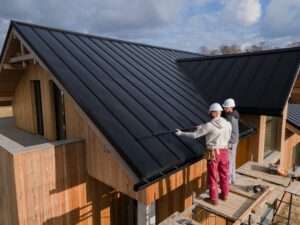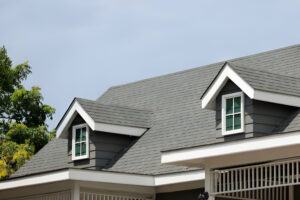Storms in New Jersey can be sudden and severe. They bring high winds and heavy rains. This can cause roof damage. Whether it’s missing shingles or structural issues, dealing with storm damage can be overwhelming. To protect your home from these problems, you should know how to handle storm damage roof repair NJ. It also helps in preventing further costly issues.
In this blog, we’ll walk you through exactly what to do after a storm hits. You can also learn how to assess the situation and why timely action matters with the help of this blog post.
Understanding Storm Damage in New Jersey
New Jersey experiences several storms throughout the year. These weather events can affect roofing systems (especially older or poorly maintained ones). You can stop turning these minor issues into major repairs. For this, you have to prepare or act fast after the storm.
A professional storm damage roof repair NJ service can help you quickly assess and repair the damage. But as a homeowner, you have to follow some steps.
Step 1: Assess the Extent of the Damage
Do a Visual Inspection
Do a quick visual inspection from the ground after the storm has passed. But make sure that it’s safe to go outside. Look for:
● Missing or curled shingles
● Debris (like tree branches) on your roof
● Sagging spots or water stains on ceilings
● Damaged gutters or flashing
● Granules from shingles in your gutters.
Your roof can be slippery and unsafe. So, avoid climbing onto it. Hire a professional for the detailed inspection.
Step 2: Take Immediate Safety Measures
Notice visible damage or leaking? Do the following:
● Place buckets or containers under ceiling leaks.
● Move furniture or valuables away from wet areas.
● Cover broken windows or holes in the roof with a tarp.
● Is water leaking near wires or appliances? Shut off the electricity.
Quick action can reduce the chance of water damage spreading into walls or the electrical system of your home.
Step 3: Document the Insurance for Damage
Proper Documentation Matters. So, take clear photos and videos of all visible damage. Do this before any cleanup or repairs begin. This includes:
● Exterior damage (shingles, siding, gutters)
● Interior damage (ceiling stains, leaks)
● Property damage caused by falling debris
Keep all damaged materials from temporary repairs. Plus, you should also keep receipts of the repair work. When you file a storm damage claim, insurance companies require detailed documentation. Accurate evidence improves the process speed. It also increases the chances of full reimbursement.
Step 4: Contact a Local and Licensed Roofing Professional
Avoid delaying repairs, as sometimes this damage can lead to mold growth. Also, it can lead to structural issues and water intrusion. Hire a licensed and insured contractor who specializes in storm damage roof repair NJ.
How to Choose the Right Roofing Contractor?
Look for:
● NJ license and insurance
● Experience with storm damage
● Positive local reviews and references
● Emergency repair services
● Help with insurance claim documentation
Don’t choose contractors who offer fast but cheap work. These companies often disappear after the job. Plus, their work may not meet NJ building standards.
Step 5: Schedule and Complete Repairs Promptly
Once you’ve chosen a trusted roofing contractor, get a full inspection. They’ll check not just the surface damage but also underlying structural problems and moisture intrusion.
Prompt storm damage roof repair NJ services can prevent:
● Mold and mildew
● Interior water damage
● Compromised insulation
● Roof collapse (in severe cases)
Some roofing companies even offer temporary protection until full repairs can be scheduled.
Why Timely Repairs Are Critical
Delaying repairs increases your risk of:
● Long-term structural damage
● Voiding your homeowner’s insurance policy
● Higher costs down the line
● Safety hazards for your family
Take action immediately after a storm. This helps in keeping your home safe. It also protects your financial investment.
Tips for Preventing Future Storm Damage
You can’t stop the storms. But you can prepare your roof by doing the following:
● Schedule regular inspections—especially before storm season.
● Keep gutters clean and functional.
● Trim trees near your roof.
● Replace damaged or old shingles.
● Choose wind-resistant roofing materials.
Conclusion:
Storms are unpredictable. But your response doesn’t have to be. Knowing how to handle storm damage roof repair NJ puts you one step ahead of nature. It also helps minimize damage and stress.
If your roof has been damaged by a recent storm, don’t wait. Contact a trusted local roofing expert in New Jersey today. They do a full inspection and fast repairs. Your home and your peace of mind are worth it.






